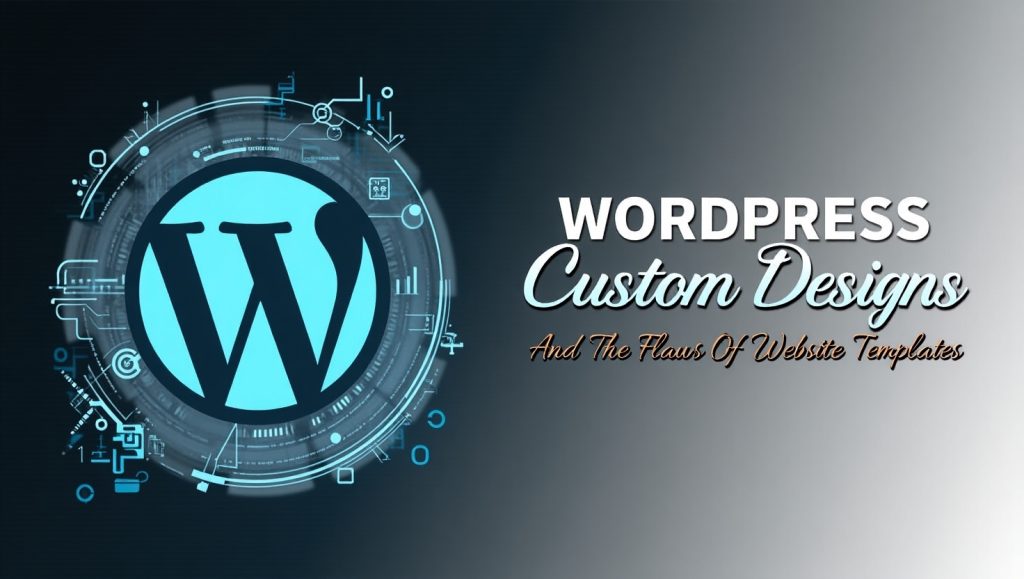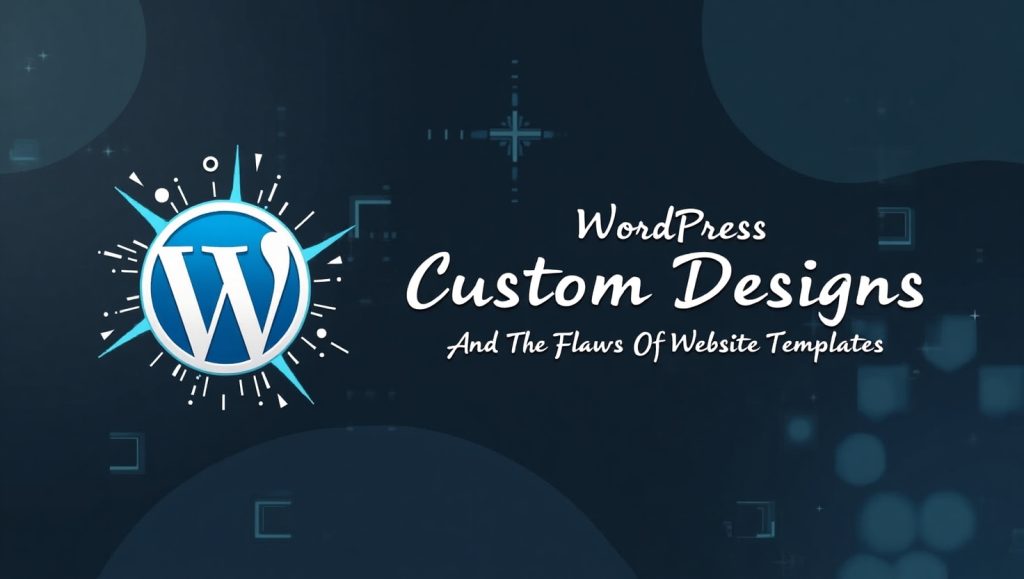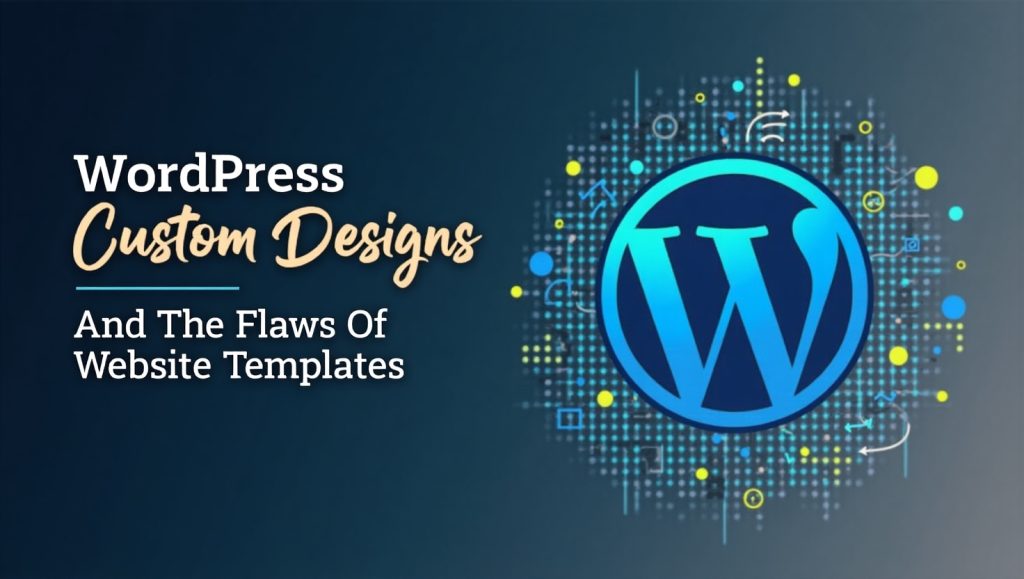
Why Should You Choose Custom WordPress Design Over Templates?
There are only a few of the reasons why custom WordPress designs trump templates when you are serious about your business and your brand. Templates look beautiful and time-saving in some sense, but custom-designed controls from all ends. You’re not constricted by the pre-made limitations, but you build exactly what you need.
A customized website is designed around your business personality. Layout, features, and flow-the journey will be from your customer’s point of view. This gives a better possibility of engaging, more fun enjoyment, and a very good possibility of converting these visitors into customers.
Besides the looks, custom designs are optimized for performance. They are fast, well-secured, and easy to scale compared to their template counterparts. There will not be a time when you find yourself stuck when you want to add any new feature or update your branding later.
They also come with features that you will not find useful, so it’s choke-full and clunky instead. On the contrary, a custom site has only necessary features keeping everything skinny and efficient.
To sum up, custom WordPress design equals building a house from the ground up, every detail tailored to fit an individual’s lifestyle. Conversely, templates, while cost-saving, resemble more renting the space-generic and not really your own.
How Does Custom Design Help Build a Strong Brand?
Your brand isn’t merely a logo and color scheme; it’s the feeling that people get whenever they engage with your business. A custom WordPress design communicates that feeling right off the bat. Everything from fonts to layouts is designed to speak your brand language.
As soon as users arrive at your site, they are already aware of whether it seems professional and trustworthy, and whether it fits with what you have to offer. With a custom design, you can control every inch of that experience.
Such level of personalization earns you credibility and basically tells your visitors that you mean serious business. It builds an emotional connection with your visitors and keeps you top of mind in an overcrowded digital space.
What Are the Hidden Flaws of Using Website Templates?

In the beginning, everything seems perfect with templates; cheap, fast, and wonderful-looking. But this is where the trouble starts when you try to go beyond the most basic needs. Want to customize something just a bit beyond what the template will allow? Here begins the headache.
A template is made for a very wide range of users and hence tries to incorporate more and more features. This is not so bad per se, but more often than not it leads to bloated code, bad performance, and unwanted features that you never will use.
And yet one more problem: You will certainly come to the limits of design flexibility. Moving things on your own, especially if some special feature needs to be constructed; that can get restrictive under template restrictions. And editing the code on your own-or getting someone else to- can also take a long time and be costly.
Even worse, your site won’t be able to feel unique. Design-wise, there might be a dozen, if not hundreds, of other sites using the same template. If you are looking to differentiate from the rest, this is a major disadvantage.
Why Do Templates Struggle With Growth and Personalization?
Templates are not equipped to develop along the way with your business. A simple site can be from what you had started from, but what about when you want to launch an online store, a booking system, or perhaps a member’s-only area? Most of the templates are not built while keeping in mind that you might want to upgrade later. Your website continues to develop, and realize that your template is very limited or not very technical in supporting advanced functions.
This means hacking together third-party plugins, or starting over again and doing a complete redesign: both of these induce time and money into your site. Templates are not one that can personalize something for you. Your brand deserves more than just swapping a few colors and uploading a logo. Real branding runs deeper, and templates often lack the framework to reflect that depth. Custom design , on the other hand, anticipates growth. It is built to adapt to the needs of your needs.
How Do Templates and Custom Designs Compare in SEO and Speed?

Speed and SEO too are quite significant to the success of a website and here is the custom designs far more superior to templates. Because what main big popular templates tend to do is fill their contents with features you may never use and, to list a few, sliders, forms, animations, social widgets, and a few scores more; they have created much weight on your site to load longer.
Page speed is the key ranking factor in the algorithm of Google. Slow websites annoy not only users but also put them lower on the scales of search results. It just means fewer eyes on content and lesser chances of connecting with potential customers.
On the SEO end, templates often have bad-coding optimization purposes. You might find that you do not even have access to modify metadata properly, either through the hierarchy of headings without diving into long-term complex theme settings or custom codes.
Custom sites solve this by giving developers unlimited freedom in what to include and how to structure it. They can streamline the code, optimize assets, and implement best practices of SEO from the get-go.
Is Clean Code Really That Important for Website Success?
Definitely. Clean and organized coding is what an ideal website runs on. Every line of code written by the developers creating a WordPress custom site has its purpose—each supports a feature that you actually need. There is no wastage; there is no clutter: just valid and useful scripts.
Less bugs, quick load times, and user experience boost, all of these come into play for both users and search engines with this clean coding. The chances of plugin conflict get lower support here, especially when you want to introduce new tools later.
Templates are made in bulk for sale, so they are often rushed. This means that corners are cut, shortcuts are taken, and the code ends up being cruddy. In these cases, fixing the issue is much harder than just clicking one button—for example, when a layout breaks due to plugin update issues.
Clean code means clean, and clean for success in the long run. It is easier for any other developer to throw some change and add the feature later without starting over.